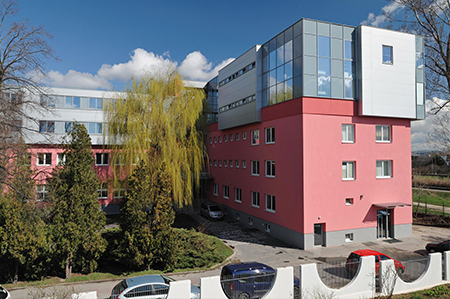What is a brief history of nursing in Slovakia? If we had a time machine and could travel in time, first, we would go back to the 10th century to visit the first known shelters providing care for those in need. They were founded by Benedictines near the Monastery of Saint Hippolytus on the Zobor Hill near Nitra. The first monastic hospital was open in the area of modern Bratislava, the capital of modern Slovakia, in 1095. Other town hospitals were founded in other Slovakian towns in the 14th and 15th centuries. In them, both monks and civilians cared for the sick and dying travellers.
The next stop in our time travels would be in the Enlightenment Era (1717-1780), the period of Theresa’s and Joseph’s reforms which allowed new progressive elements in health care. The reforms limited the church’s influence and gradually improved care for the sick. In 1753, the first regional and town physicians (orig. fyzikusi) were named, and they introduced new hygienic measures. An important historic milestone for nursing in our area was 1770 when the Faculty of Medicine was founded at the Jesuit University in Trnava. For the first time in history, institutional education was required in both doctors and midwives.
We would also visit Janka Hrebendová, the Slovakian pioneer in nursing, who organised courses for women on wound care. Moreover, she organised care for the wounded in the battlefields in 1848. The first professional nursing school in the world established in London in 1860 significantly influenced the development of nursing in then Austria-Hungarian Empire too. So, we would witness publication of the first textbooks for nurses in Slovak. Nursing care was provided mostly to the sick in hospitals in poor working conditions.
Our next stop would be at the beginning of the 20th century, in 1914, when training for nurses became longer and included information on prevention, and health and social care both in theory and practice. In our time machine, we would celebrate the foundation of the Czechoslovak Republic in 1918 and further development of nursing based on the experience of the Nursing School in Prague. The working conditions for nuns and civilian nurses, however, were still poor and demanding, both physically and psychologically. Humility, discipline, and obedience were required.
Flying through 1929, 1932 and 1933, we would see the establishment of new schools providing better nursing education and bringing some prestige to nurses.
The World War II was a period of care provided for the sick and wounded, and even abandoned children. After the War, in 1947, there were nine nursing schools in Slovakia. Political and societal changes after 1948 influenced nursing education too. Nurses were educated in secondary schools and their work was perceived as supplemental to medical care. Nurses were not independent; they were accepted only as assistants to doctors. Nursing in Slovakia was isolated from the developed countries. The nurses who gained information from abroad tried (often unsuccessfully) to introduce it in education and practice.
Our time machine would certainly stop in 1989, when political changes after the Velvet Revolution resulted in changes in all areas, including nursing. In the years to come, nursing was recognised as an independent scientific discipline focusing on university education, research, science, and international cooperation.
And here we are in 2021 and Constantine the Philosopher University in Nitra is a proud partner in the international project – “A New Nurse Educator”.

Our travels continue to the future. In 2040, nursing in Slovakia …
Dana Zrubcová
Andrea Solgajová
Ľuboslava Pavelová
